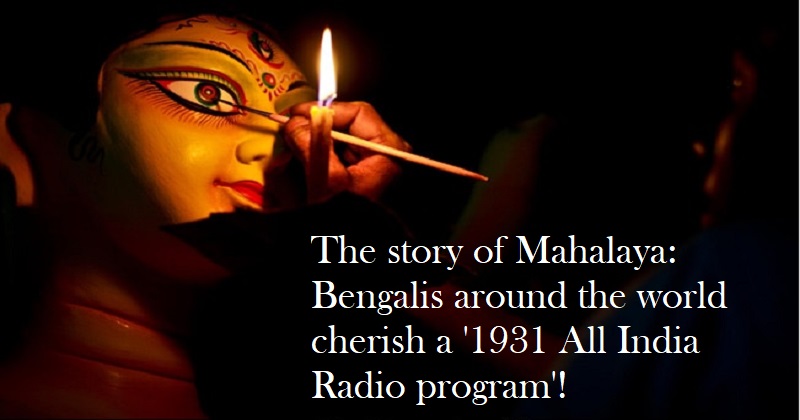
Hindus celebrate Mahalaya each year to mark the conclusion of a 14-day moon cycle known as Pitri Paksha in Sanskrit. It is a day to honour one’s ancestors by feeding birds and other animals and remembering one’s own ancestors. This day ushers in a weeklong celebration for Bengalis known as Durga Puja, which coincides with Navrati, another Hindu holiday honouring the goddess.
Every year on Mahalaya, Indian Bengalis get up early to listen to the late Birendra Krishna Bhadra, a great radio broadcaster and writer, recite the Mahisasuramardini. The audio play, which has been updated throughout time in Hindi for audiences across all of India and used in a number of teleplays, has become a part of a tradition of the Bengali community.
It has become nearly ritualistic to play Bhadra’s audio-musical on Mahalaya early in the morning. It is now accessible on YouTube. Bengalis are known to listen in to Bhadra’s voice and his recitation of the Sanskrit shlokas, which signal the beginning of Durga Puja celebrations days later, wherever they may be in the globe.
All Bengalis now commemorate Mahalaya with Bhadra’s voice, a practise that oddly finds its origins in contemporary technology. It is a radio-induced culture that was first broadcast in 1931 as a programme to entertain pious Hindus as they travelled to the banks of the River Ganga to perform rites before dawn. These ceremonies, referred to as ‘Tarpan’, were carried out in remembrance of one’s ancestors.
The play- Mahisasuramardini’s History;
The first broadcast of the Mahalaya programme took place in Akashvani, Calcutta, in 1931. Premankur Aatorthi, Birendra Krishna Bhadra, Nripendra Krishna Mukhopadhyay, Raichand Boral, and Pankaj Kumar Mallik—all regarded as pillars of AIR, Calcutta—organized the programme.
Initially, the one hour and thirty minutes would often be played live at the radio station in Calcutta under the direction of Bhadra’s recitation as the radio play gained popularity. The audio-musical has included some of the most well-known vocalists from Bengal throughout the years, including Dwijen Mukhopadhyay, Pratima Bandopadhyay, Shyamal Mitra, and Hemant Mukherjee.
The controversy;
Bhadra was briefly replaced in 1976 by the voice of well-known Bengali cinema actor Uttam Kumar, and the show was renamed ‘Durga Durgatiharini’, but audiences preferred Bhadra’s voice for the occasion. The next year, Akashvani ultimately brought in the original version, which was recited by Bhadra, and it is being performed today.
Funny thing is that even though most people have grown up hearing Bhadra’s recitation and consider it to be a part of tradition, Bengalis adopted it as their own. To celebrate Durga Puja, Mahalaya and Bhadra’s vocals are important. Without hearing Bhadra’s loud voice chanting Sanskrit shlokas, the celebrations appear to be lacking. The last 90 years have seen extensive usage of his recitation in popular culture. The venerable radio programme, Bhadra’s Voice, is just as essential to the celebrations as the actual days of Durga Puja.
Since the invention of television, several networks have teleplays that tell the tale of how Goddess Durga overcame obstacles to defeat the demon king Mahisasura. No matter whose station you are watching, Bhadra’s recitation is always playing in the background as the goddess and the demon engage in their final fight. Each has its unique rendition of the folktale.
Bhadra has grown in significance in the last 90 years as a component of Bengali culture. What initially served as a way to keep tired devotees awake in the early morning hours of the day has evolved through time into a tradition that no Bengali is prepared to give up.

Post Your Comments